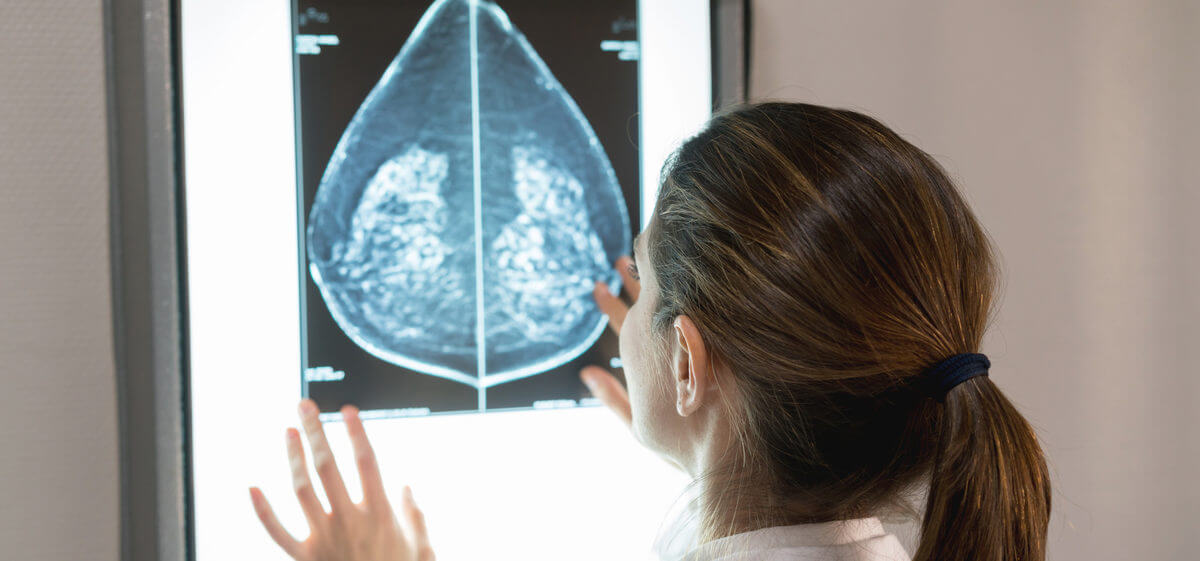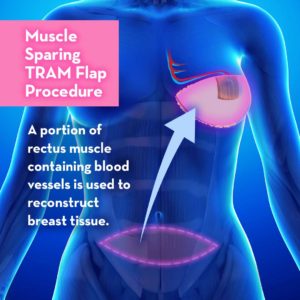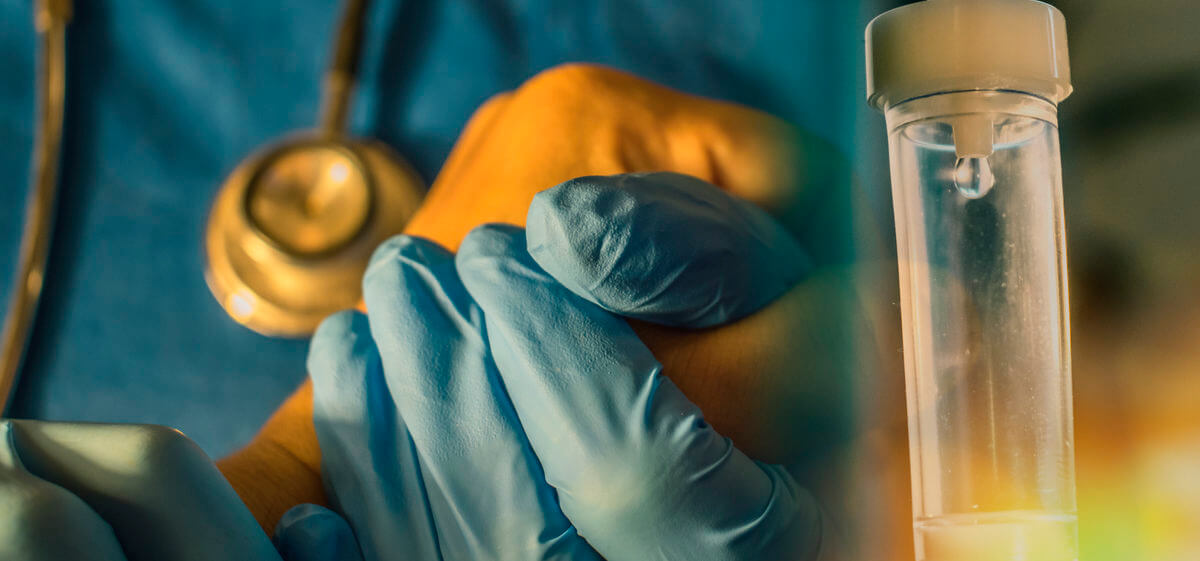What is TRAM Flap Reconstruction Surgery?

These days, there are many options to regain a normal appearance after having a mastectomy. With the help of their doctors, women may consider options from mastectomy bras and breast prosthetics to breast implants. However, a more natural appearing option is a TRAM flap reconstruction surgery.
Where is the TRAM Flap located?

A TRAM Flap (transverse rectus abdominis myocutaneom) is a muscle located in your lower abdomen. The reconstruction procedure requires removal or movement of the muscle to replace breast tissue after a mastectomy.
Because TRAM Flap tissue is similar to breast tissue, it is a more natural choice and is the most common reconstructive procedure.
TRAM Flap reconstruction, however, takes longer than implant procedures. It takes an additional 3 to 8 hours after the mastectomy, compared to an implant, which adds roughly 45 minutes. The procedure itself is more complicated because of cutting the muscle and can take up to a year for tissue to fully recover.
Types of TRAM Flaps Reconstruction Surgery Procedures
There are three main kinds of TRAM Flaps: pedicled, free and muscle-sparing free.
A pedicled TRAM Flap procedure requires that the fat, skin, blood vessels and muscle from the lower half of the belly be moved beneath the skin to the chest through a tunnel. The blood vessels of the pedicled TRAM Flap remain connected to the initial blood supply in the abdomen. Downsides to this procedure include loss of abdominal tissue, bulging and fat necrosis. Because the patient has lost abdominal muscle, they will have a difficult and painful time recovering.
In a free TRAM Flap procedure, the blood vessels, skin and muscle are totally disconnected and reconnected using microsurgery to relocate in place of the breast tissue. This procedure reduces the possibility of a bulge and improves blood supply, which lowers the chance of fat necrosis. However, the patient will still sacrifice abdominal muscle, resulting in a longer recovery than with the pedicled procedure.
Less of the abdominal muscle is used with the muscle-sparing free TRAM Flap procedure. As with the other procedures, the blood vessels, skin and muscle are disconnected and reconnected using microsurgery. The patient will experience fewer side-effects and will still have all of the benefits of a free TRAM Flap procedure. This is often surgeons’ first choice when choosing a TRAM Flap surgery.
Your surgeon will help you make the best decision for you.



